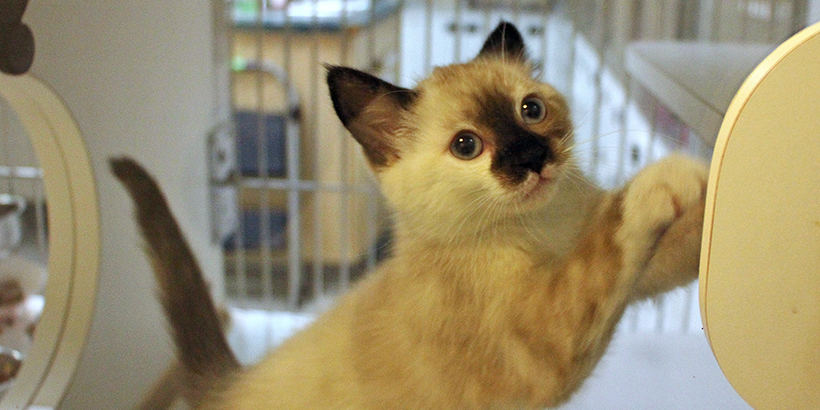
Some cats cannot handle a lot of human touch. These cats often react by swatting or biting in response to being pet for too long, or too roughly. These cats are often friendly and even seek attention from people. Below are some tips on identifying and working with overstimulation in cats.
When does overstimulation occur?
Each cat can experience overstimulation at different times. Below are some of the most common.
- Excess petting
- Rough play – with a human, other animal, or by themselves
- During or after active times in the home
- After major household changes
Reading their body language
Since cats can’t speak your language, it becomes your responsibility to speak the cat’s language. Before and during interaction with your cat, pay close attention to their eyes, ears and tail.
- Eyes: Cats who are becoming overstimulated often have very dilated eyes. Their pupils will be full circles and their eyes will be open wide.
- Ears: An overstimulated cat may have ears that are flattened (also called airplane ears), or pinned back.
- Tail: A cat with a straight-up tail, puffed-out fur, or a wagging tail is ready to react. Generally, the faster the swoosh of their tail, the more stimulated they are. It’s now time to stop petting or playing.
- If you notice that your cat shows some of these body language clues, it is likely time to step away.
Petting
Overstimulated cats are often friendly and seek out human affection. It’s up to you to keep your cat from overreacting.
- Each petting session should be kept to under a minute.
- Avoid petting when you notice your cat is “wound up,” or showing signs listed above.
- Avoid head-to-tail petting and instead just pet on their head, cheeks and neck.
- Keep petting gentle as to not encourage the cat to respond roughly.
Play
Playtime is extremely important for these cats so they have an appropriate outlet for their energy.
- Avoid using your hands as playthings. If the cat becomes too excited, this could lead to a future bite or scratch.
- In order to keep your body away during playtime, use wand toys or laser pointers.
- If your cat likes to grab on to things and “bunny kick,” consider getting a large stuffed animal or a “Cat Kicker” toy for them to wrestle with.
- Once you find your pet’s favorite play style, schedule playtime throughout the day. Play with your cat as much as possible to get them tired. A successful playdate should end in the cat lying down, possibly even panting.
- Remember not to pet your overstimulated cat during or immediately after play, as this could still be too overwhelming.
